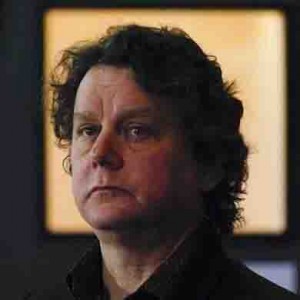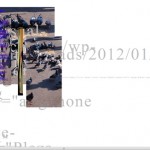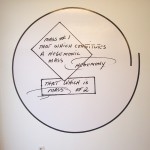I just fed my blogpost about bird circles to Shredder, a work of net-art by Marc…
Jeff Wall on mimesis: Visual Art Research.com
 Last monday we discussed ‘Depiction, Object, Event’ by Jeff Wall. He did the first Hermes Lecture at the Provinciehuis in ‘s-Hertogenbosch , a building that I know very well. Makes me feel as if I have been very close to this little piece of history.
Last monday we discussed ‘Depiction, Object, Event’ by Jeff Wall. He did the first Hermes Lecture at the Provinciehuis in ‘s-Hertogenbosch , a building that I know very well. Makes me feel as if I have been very close to this little piece of history.
Some notes on things that caught my attention.
page 15: “Under what Duve calls the conditions of nominalism, the name ‘art’ must be applied to any object that can be legitimately nominated as such by an artist. Or, to be more circumspect, it is the object from which the name art cannot logically be witheld. The Readymade therefore proved that an arbitrary object can be designated as art and that there is no argument available to refute that designation.” This is so much like Karl Popper and his falsification theory – when we cannot bowl over a certain theory it is assumed to be correct, until a better bowler or a better ball comes along. Have to talk with Henk Slager about Popper – missed his lecture last friday because of a ‘beyond the Dutch’ appointment – pity.
Like the idea of art bifurcating into the ‘canonical forms’ (painting, sculpture and suchlike) and ‘post-autonomous art’. Quote page 22: ‘… brought out the notion that an event could have the same kind of artistic status as an object; in this period the notion of the event as the essential new form of post-conceptual art crystallized and became decisive. And the event is, by nature, an ensemble of effects if not a ‘confusion’ of them.” My work is like that, it ony exists in the moment that people are actively engaged with it.
What I also noted is the idea of mimesis – artists imitating a media conglomerate (Warhol), a museum department, a store, etc. I picked up on this idea from Klaas’ remarks in an earlier class , at the moment I am mimicking this dotcom company named Visual Art Research.com, that has its premises at the Tractieweg 41 in Utrecht and its outdoors lab at the same address. Quite soon I will have to take my old business suits out of the closet, print business cards and start networking on the strength of the research I am now doing for MaHKU. The idea of presenting my work as experiments really works for me. it expresses that I am trying out different approaches, it gives me room to maneuvre.
Tried to make a statement about what I do and why. Try this for size: I create experimental environments that invite people to explore the ‘oldfashioned’ way, using hands, feet, body. Maybe I want to use the frustration of not being able to explore with hands, feet, body, of the body being not enough. Man as a defenseless animal, developing technology to provide what nature has not provided us with: fur, claws, musclular strength, speed, …. Then when we use this technology we become removed from “the ‘lifeworld’, to use Jurgen Habermas’ term for it” (quote page 18). I’m also interested in the traces we leave behind when exploring (a path that is made by walking). Visual traces that disappear with time. I don’t know – things start to sound so boring when I write them down.
Question: can we really connect to a place when our feet have never touched the ground there? Note: check on the question of groundedness and how we build connections to a place, how we take root.
One last thing: when aesthetic criteria are applied to the ‘canonical’ art forms, and there is a suspension of aethetic criteria for the new forms, and my work is in the category of ‘new forms’, then what criteria can be applied to my experimental environments?
– The criterion of ‘are they tempting enough to get people to engage with them’ – succes would be measured in the level of participation. This is what at present concerns me the most, this is why I experiment trying different setups and circumstances. But I don’t think this in itself can be enough – better build a fair or a playground and have done with it.
– the criterion that goes with the element of surprise: did particpants leave with a smile on their face?
– Yet another criterium could be ‘did I get a message across?’ – but how to measure that? And what message exactly?
Quote from ‘From Studio to Situation’, page 48: “It is important to understand, therefore, that the convivial environments, encountered here and there, do not, if the artists are aware of what they are doing, represent an end in themselves. They bring into play this great, ‘What’s it for?” which marks the true dividing line between entertainment and artistic praxis. For Tiravanija or Parreno, the use value of conviviality is combined with its exhibition value within the framework of an artistic project.”
| « Mika Hannula: ‘catch one or two balls’ | <-- previous post | next post --> | Making a space into a place » |
|---|








